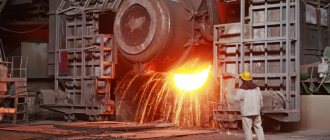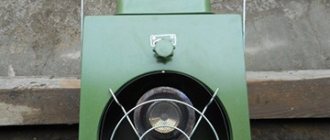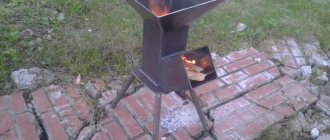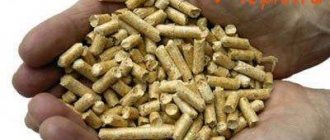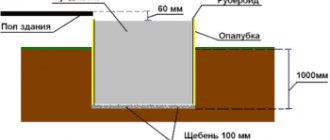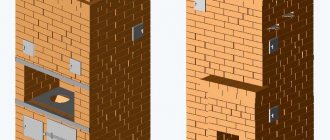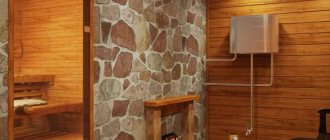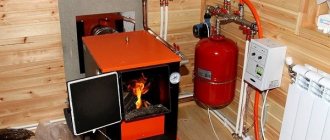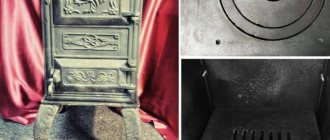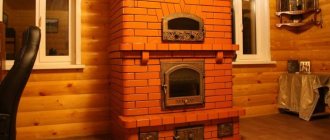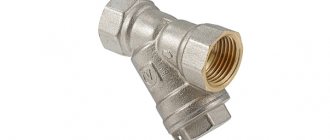Author: Yuriy Fedorovich Kolesnikov, thermal power engineer
Our time has never been called: the age of the atom, space, plastics, electronics, composites, etc., etc. In fact, our age is still iron - its alloys still form the core of technology; the rest, although very powerful, is periphery. The path of iron into structures, products and structures begins with the smelting of cast iron from ore in a blast furnace.
Note: there are almost no rich iron ores left in the world that are suitable for smelting immediately after extraction. Current blast furnaces operate on enriched sinter and pellets. Further in the text, ore means just such a raw material for ferrous metallurgy.
A modern blast furnace (blast furnace) is a grandiose structure with a height of up to 40 m, a weight of up to 35,000 tons and a working volume of up to 5,500 cubic meters. m, producing up to 6000 tons of cast iron per melt. The blast furnace ensures the operation of a host of systems and units covering an area of tens and hundreds of hectares. This whole facility looks impressive even when stopped with the blast furnace extinguished on a cloudy day, but in operation it is simply enchanting. The release of cast iron from a blast furnace is also an exciting spectacle, although in modern blast furnaces it no longer resembles a picture from Dante’s Inferno.
Giant blast furnace in shutdown and in operation
Release of pig iron from a blast furnace
The basic principle
The operating principle of the blast furnace is the continuity of the metallurgical process for the entire life of the furnace until the next overhaul, which is carried out every 3-12 years; the total service life of a blast furnace can exceed 100 years. A shaft blast furnace: from above, a charge of ore with limestone flux and coke is periodically immersed in portions (in buckets), and molten cast iron is also periodically released from below and the molten slag is drained, i.e. the column of raw materials in the blast furnace shaft gradually settles, turning into cast iron and slag, and is built up on top. However, the path of the ferrous metallurgy to this seemingly simple scheme was long and difficult.
Receipt[edit | edit code]
The blast furnace is made of eight double sheets of wrought iron and a crucible.
| Ingredients | Process |
| Double Wrought Iron Sheet + Crucible |
Constructionedit | edit code
The height of a blast furnace determines the amount of ore, flux, and charcoal it can contain, and therefore the maximum amount of ore that can be smelted at one time. The small blast furnace is one block high and requires a minimum of 4 fire brick blocks and 12 wrought iron sheets. In size, the maximum blast furnace can be 5 blocks high, and requires 20 fire brick blocks and 60 wrought iron sheets:
| Furnace construction diagram |
| Layer 3 |
| Layer 2 |
| Layer 1 |
A minimum size blast furnace is constructed as follows:
Layer 3:
- Fire Bricks: In two blocks above the ground, create a “pipe”, surrounding the central air block on all four sides.
- Metal Sheets: Place wrought iron sheets or higher grade metal sheets on the sides of the chimney. Note: Sheets should not be placed on top or bottom.
Layer 1:
Crucible: Place the crucible on the ground under the center air block.
Layer 2:
Blast Furnace Block: Place the blast furnace block between the chimney and the crucible (⇧ Shift+RMB) under the central air block.
- Bellows: Place the Bellows on the side of the blast furnace block, making sure the side with the hole faces the blast furnace.
- Completion: Place the tuyere in the blast furnace.
- Expansion: Blast furnaces can increase the overall storage capacity by adding up to four additional layers to an existing structure. To extend a blast furnace, simply add an additional layer to the chimney.
Applicationedit | edit code
Used for smelting cast iron. To do this, you need a tuyere (put it in the blast furnace inventory). The smelting process is as follows:
Throw an equal amount of charcoal, flux and iron ore (Limonite, hematite or magnetite) into the structure from above. At the first level of the structure max. capacity is 4, and each subsequent level also increases the capacity by 4. The maximum (5) level structure has a capacity of 20.
Important: in the process of smelting ore, charcoal will be consumed, so it will have to be added periodically. You can add coal in advance, then it will be consumed as needed
The optimal quantity is 3 pieces (tested for level 1-3 structure).
- Light the main block of the blast furnace using an igniter or flint. The texture of the block will change to “burning”.
Working blast furnace
- The blast furnace should be heated to a “bright white” temperature. To do this, you need to use furs (RMB on them).
Attention: if there is too little coal, the blast furnace will simply cool down and the whole process will have to start again! A shortage of 1 (2 if the oven is not fully loaded) units is acceptable. coal until the desired temperature is reached
- Upon reaching the required temperature and in the presence of a tuyere, the blast furnace will begin to pour molten pig iron into the crucible underneath, and the strength of the tuyere will be wasted (at the rate of 1 piece of ore = 1 unit of strength)
- You can remove cast iron from the crucible using clay molds
Story
The Iron Age gave way to the Bronze Age mainly due to the availability of raw materials. Raw iron was much inferior to bronze in everything else, including labor intensity and cost; the latter, however, during the time of slavery, few people worried. But bog ore, which is almost pure iron hydroxide, or high-grade iron ore, could be found everywhere in ancient times, in contrast to the deposits of copper and - especially - tin needed to obtain bronze.
The first iron from mineral raw materials was obtained, judging by archaeological data, by accident when the wrong ore was loaded into a copper smelter. When excavating ancient smelters, apparently discarded pieces of iron smelting are sometimes found near the furnaces (see below). The shortage of raw materials forced us to take a closer look at them, but the ancients, in general, thought no worse than us.
Initially, iron was obtained from ore so-called. using the cheese-blowing method in a blast furnace (not a blast furnace!). The reduction of Fe from oxides occurred due to the carbon of the fuel (charcoal). The temperature in the blast furnace did not reach the melting point of iron at 1535 degrees Celsius, and as a result of the reduction process, a mass of sponge iron supersaturated with carbon - kritsa - was established in the blast furnace. To extract the kritsa, the domnitsa had to be broken, and then the kritsa had to be compacted and the excess carbon literally knocked out of it, forging long, hard and persistently with a heavy hammer. From the point of view of that time, the advantages of the cheese-making process were the ability to produce kritsa in a very small furnace and the high quality of kritsa iron: it is stronger than cast iron and is less susceptible to rusting. How to obtain iron using the cheese-making method, see the video below.
Video: smelting iron using the cheese-blowing method
China was the first, much earlier than other countries, to move from slavery to feudalism. Slave labor ceased to be used in production there and commodity-money relations began to develop even when Ancient Rome was firmly in the West. The cheese-making process immediately became unprofitable, but it was no longer possible to return to bronze, there simply wouldn’t be enough of it. The role of flux in facilitating the smelting of metal from ore was known back in the Bronze Age; to smelt iron it was only necessary to increase the pressure, and the Chinese, through trial and error, by the 4th century. n. e. learned to build blast furnaces with supercharged bellows driven by a water wheel, on the left in Fig.
Antique blast furnaces
To an identical design in the second half of the 15th century. The Germans arrived, on the right in the figure. Quite independently: historians trace a continuous series of improvements from the blast furnace through the stukofen and blauofen to the blast furnace. The main thing that German metallurgists contributed to ferrous metallurgy was the combustion of high-quality coal into coke, which greatly reduced the cost of fuel for a blast furnace.
The terrible enemy of the original blast furnace process was the so-called. frosting, when, due to a violation of the blast regime or a lack of carbon in the charge, a “goat sat down” in the furnace, i.e. the charge was sintered into a solid mass. To remove the goat, the blast furnace had to be broken. This historical example is illustrative.
The Ural factory workers, the Demidovs, are known to be famous for their cruelty and inhumane treatment of workers, especially since there were many of them “unpatched,” runaway serfs and deserters. The “workers” were once completely fed up, and they presented their demands to the clerk, which, it must be said, were quite modest. According to Demidov’s custom, he literally sent them in Russian. Then the workers threatened: “Come on, come here yourself, otherwise we’ll put the goat in the oven!” The clerk stretched out, turned pale, mounted his horse and galloped away. Less than an hour passed (in the days of horse-drawn transport - instantly), the lathered “himself” galloped up on a lathered horse, and immediately said: “Brothers, what are you doing? What do you want me to do?” The workers repeated their demands. The owner, figuratively speaking, sat down and said “Koo!” and immediately ordered the clerk to do everything thoroughly.
Until the 19th century The blast furnaces were actually raw materials: unheated and not oxygen-enriched atmospheric air was blown into them. In 1829, the Englishman J.B. Neilson tried to heat the blown air to just 150 degrees (having previously patented his air heater in 1828). The consumption of expensive coke immediately dropped by 36%. In 1857, also an Englishman, E. A. Cowper, invented regenerative air heaters, later named Cowpers in his honor. In the cowpers, the air was heated to 1100-1200 degrees due to the afterburning of exhaust blast furnace gases. Coke consumption decreased by another 1.3-1.4 times and, what is also very important, the blast furnace with cowpers turned out to be not susceptible to fouling: when signs of fouling appeared, which happened extremely rarely with very serious violations of the technical process, there was always time to inflate the furnace. In addition, in cowpers, due to the partial disintegration of water vapor, the intake air was enriched with oxygen to 23-24% versus 21% in the atmosphere. With the introduction of the Cowper blast furnace, the processes in the blast furnace from the point of view of thermochemistry reached perfection.
Blast furnace gas immediately became a valuable secondary raw material; They didn’t think about ecology back then. In order not to waste it, the blast furnace was soon supplemented with a blast furnace apparatus (see below), which made it possible to load charge and coke without releasing blast furnace gas into the atmosphere. This is where the evolution of the blast furnace basically ended; its further development followed the path of important, but partial improvements, improvement of technical and economic, and then environmental indicators.
Connection with other words
Words containing -domna-:
- homeless
- dioecious
- home-based
- monoecious
- home
What type of blast furnace is there (adjectives)?
Selection of adjectives for words based on the Russian language.
first new big old huge small melting hot giant last of God Peter's primitive the rest squat world high best built northern blazing ancient working blown out snowy disheveled beautiful surviving breech heel wide some burly good monstrous powerful fire-breathing Kuznetsk beautiful whole operating extreme ninth pretty factory necessary heavy-duty earthly seventy-year-old ancient heavenly undermined village angry wise powerful single habitual silent extinguished decrepit launched large long-range
What can a blast furnace do? What can you do with blast furnace (verbs)?
Selection of verbs for words based on the Russian language.
appear extinguish frown approach attract escape go raise go sit down lose return turn gray cough go give correct hiss order disappear look at remind jerk bend over pronounce give out laugh stretch shake leave decide grin bring blink drop out squint buzz cough talk walk stand out nod do punish push jump up crystallize stand wrinkle swing tell lead tap stretch out refuse say get tired get out take out finish find enter move away
Associations to the word blast furnace
Russia theme province Ural frame labor earth waiting part tenderness death foundation dignity world cover roar time fur floor coin lake scale sky wife temperature execution planet moment life Kuznetsk shivorot spring order bad metal clip ore glass minute plan bell charge dining room Ruhr belly hut
Metallurgy Technology Christianity General vocabulary Religion
Domain process
The general diagram of a blast furnace with service systems is shown in Fig. The foundry yard is an accessory to small blast furnaces that produce mainly foundry pig iron. Large blast furnaces produce over 80% of converting pig iron, which the iron truck immediately takes from the casting site to the converter, open-hearth or electric smelting shops for conversion into steel. Foundry cast iron is cast into earthen molds, usually into ingots - ingots - which are sent to manufacturers of metal products, where they are melted down for casting into products and parts in cupola furnaces. Cast iron and slag are traditionally discharged through separate openings - tapholes, but new blast furnaces are increasingly equipped with a common taphole, divided into cast iron and slag by a heat-resistant plate.
General diagram of a blast furnace
Note: blanks of raw iron without excess carbon, obtained from cast iron and intended for processing into high-quality structural or special steel (second to fourth stages) are called slabs. In metallurgy, professional terminology is developed in no less detail and precision than in maritime affairs.
At present, it seems that there are no reserves of coal and coke ovens left at blast furnaces. A modern blast furnace runs on imported coke. Coke oven gas is a deadly poisonous environmental killer, but it is also a valuable chemical raw material that must be used immediately, while still hot. Therefore, coke production has long been separated into a separate industry, and coke is supplied to metallurgists by transport. Which, by the way, guarantees the stability of its quality.
How does a blast furnace work?
An indispensable condition for the successful operation of a blast furnace is an excess of carbon in it during the entire blast furnace process. For the thermochemical (highlighted in red) and technical and economic diagram of the blast furnace process, see Fig. Iron smelting in a blast furnace takes place as follows. way. A new blast furnace or one reconstructed after a 3rd category overhaul (see below) is filled with materials and ignited with gas; also heat one of the cowpers (see below). Then they start blowing air. The combustion of coke immediately intensifies, increasing the temperature in the blast furnace, and the decomposition of the flux begins with the release of carbon dioxide. Its excess in the furnace atmosphere with sufficient blown air does not allow the coke to burn out completely, and carbon monoxide - carbon monoxide - is formed in large quantities. In this case, it is not a poison, but an energetic reducing agent, greedily taking oxygen away from the iron oxides that make up the ore. The reduction of iron with gaseous monoxide, instead of less active solid free carbon, is the fundamental difference between a blast furnace and a blast furnace.
Chemical processes and temperature in different zones of a blast furnace
As the coke burns and the flux breaks down, the column of materials in the blast furnace settles. In general, a blast furnace consists of two truncated cones formed by the bases, see below. The upper, high one is the blast furnace shaft, in which iron from various oxides and hydroxides is reduced to iron monoxide FeO. The widest part of the blast furnace (the place where the bases of the cones meet) is called raspar (raspar, raspar - incorrectly). In steam, the settling of the charge slows down, and iron is reduced from FeO to pure Fe, which is released in drops and flows into the blast furnace. The ore seems to be steaming, sweating molten iron, hence the name.
Note: the time it takes for the next batch of charge in a blast furnace to travel from the top of the shaft to the melt in the forge ranges from 3 to 20 or more days, depending on the size of the blast furnace.
The temperature in a blast furnace within the loading column increases from 200-250 degrees under the throat to 1850-2000 degrees in steam. Reduced iron, flowing down, comes into contact with free carbon and at such temperatures becomes highly saturated with it. The carbon content in cast iron exceeds 1.7%, but it is impossible to knock it out of cast iron. Therefore, the cast iron obtained from the blast furnace is immediately taken away liquid for the first processing into ordinary structural steel or slabs, so as not to waste money and resources on its remelting, and the blast furnace, as a rule (large and extra-large blast furnaces - exclusively), operates as part of a metallurgical plant .
Horn
This is the lower cylindrical part of the furnace where high-temperature blast furnace processes are carried out. In the furnace, coke is burned and blast furnace gas is formed, interaction between liquid phases, accumulation of liquid smelting products (pig iron and slag) and their periodic release from the furnace occur. The forge consists of an upper or tuyere part and a lower or metal receiver. The bottom of the metal receiver is called the flange.
At the bottom of the hearth there are cast iron and slag tapholes, which are holes for releasing cast iron and slag. After the cast iron is released, the tap hole is closed with a special refractory mass using a so-called gun, which is a cylinder with a piston. Before opening the cast iron tap hole, the gun is filled with tap hole refractory mass. After the end of cast iron production, the gun is brought to the tap hole, and with the help of a piston mechanism, the tap hole mass is squeezed out of the gun and fills the tap hole channel. To open a cast iron tap hole, a special drilling machine is used, which drills a hole in the tap hole mass through which the cast iron is released.
Slag tapholes are located at a height of 1500 - 2000 mm from the level of the cast iron taphole and are closed using a slag stopper, which is a steel rod with a tip. The cast iron and slag leaving the blast furnace are directed through chutes into cast iron and slag ladles. Currently, slag is mainly produced together with cast iron and is separated from the cast iron by a special device on the furnace chute.
The slag flowing from the blast furnace through the cast iron tap hole is separated from the cast iron on the furnace chute using a separating plate and pass, which act as a hydraulic seal. The high-density cast iron passes into the gap under the separating plate, while the lighter slag is discharged into a side chute.
If it is necessary to supply cast iron to other enterprises, it is poured into ingots (ingots) weighing 30–40 kg on a special casting machine.
In the upper part of the hearth, at a distance of 2700 - 3500 mm from the axis of the cast iron tap hole along the circumference of the hearth, air tuyeres are installed at equal intervals, through which blast heated to 1100 - 1300 ° C is fed into the furnace, as well as natural gas and other fuel additives (fuel oil, pulverized coal fuel). Each blast furnace is provided with blast from its own blower. Blast heating is carried out in regenerative-type air heaters, when, under the influence of the heat of the burned gas, the nozzle of the air heater made of refractory bricks is first heated, and then air is passed through it, taking heat from the nozzle. During the heating period of the nozzle, gas and air are supplied to the combustion chamber for its combustion. The combustion products, passing through the nozzle, heat it and go into the chimney. During the blast heating period, cold air enters the heated nozzle, is heated, and then fed into the blast furnace. As soon as the nozzle has cooled down so much that the air cannot be heated to the set temperature, it is transferred to the next air heater, and the cooled one is put on heating. The air heater nozzle cools faster than it heats up. Therefore, the block of blast furnace air heaters consists of 3–4 devices, of which one heats the air, and the rest are heated. The profile of a blast furnace is characterized by the diameters, heights and angles of inclination of individual elements. The dimensions of some ovens are shown in Table 1.
Table 1 - Furnace dimensions
| Dimensions, mm | Useful volume of the furnace, m3 | ||
| 2000 | 3000 | 5000 | |
| Diameter: | |||
| forge | 9750 | 11700 | 14900 |
| raspara | 10900 | 12900 | 16300 |
| fire pit | 7300 | 8200 | 11200 |
| Height: | |||
| full | 32350 | 34650 | 36900 |
| useful | 29200 | 32200 | 32200 |
| forge | 3600 | 3900 | 4500 |
| mines | 18200 | 20100 | 19500 |
The dimensions of each part of the furnace must be linked to each other and be in certain proportions with the sizes of other parts of the furnace. The furnace profile must be rational, which ensures the most important conditions for the blast furnace process:
- smooth and stable lowering of charge materials;
- favorable distribution of oncoming gas flow;
- favorable development of recovery processes and the formation of cast iron and slag.
The main quantities characterizing the dimensions of the working space are the usable volume of the oven and the usable height. They include the height and volume filled with materials and smelting products. When determining these parameters, the upper level is taken to be the mark of the lower edge of the large cone of the filling device in the lowered position, and the lower level is the level of the axis of the cast iron tap hole.
Blast furnace design
The design of a blast furnace as a structure is shown in Fig:
Blast furnace design
The entire blast furnace is assembled in a steel case with a wall thickness of 40 mm. The bottom (under) of the cylindrical furnace is walled up in the heat-resistant stump of the blast furnace (base, head, top of the underground foundation). The lining of the hearth reaches a thickness of 1.3-1.8 m and is heterogeneous: the axial zone of the flange is lined with high-alumina brick, which conducts heat poorly, and the sides are lined with graphite materials, which have a fairly high thermal conductivity. This is necessary, since the thermochemistry of the melt in the furnace has not yet “calmed down” and some excess heat is released there against losses due to cooling. If it is not moved to the side, onto a heat-resistant stump, the structure of the blast furnace will require another repair of a higher level (see below).
The part of the blast furnace that expands upward - the shoulders - is lined with already graphitized blocks with a thickness of approx. 800 mm; The fireclay lining of the shaft is of the same thickness. Fireclay, like the lining of a hearth with shoulders, is not wetted by molten slag, but is closer to the latter in chemical composition. That is, during operation, the blast furnace is minimally overgrown with soot and holds the internal profile better, which simplifies and reduces the cost of regular repairs.
The furnace and shoulders work in the most difficult conditions, excess weight loads are dangerous for them, so the blast furnace shaft rests with its shoulders (ring-shaped extension) on a strong steel ring - the marator - resting on steel columns, walled up in a stump. Thus, the weight loads of the hearth with shoulders and the shaft are transferred to the base of the blast furnace separately. Hot air from the cowpers is blown into the blast furnace from a ring-shaped tubular collector with thermal insulation through special devices - tuyeres, see below. There are from 4 to 36 tuyeres in a blast furnace (in giant blast furnaces for 8,000-10,000 tons of charge and 5-6 thousand tons of cast iron per day).
Repair ranks
The current state of the blast furnace is determined by the chemical composition of the cast iron and slag. If the content of impurities reaches the limit, repair of a 1st category blast furnace is prescribed. Melts are released from the forge, the cowpers are jammed (see below) and the blast furnace is left at low pressure, with a temperature inside the forge of 600-800 degrees. Level 1 repairs include visual inspection, mechanical inspection, furnace profile measurements, and lining sampling for chemical analysis. Once upon a time, a blast furnace was inspected at low breaths by people in special protective suits with self-contained breathing devices; now this is done remotely. After repairing the 1st category, the blast furnace can be restarted without ignition.
The result of the 1st category repair most often (unless bad ore, flux and/or defective coke was missed) is a 2nd category repair, during which the lining is corrected. Its partial or complete re-laying, straightening or replacement of the top apparatus is carried out in the order of repair of the 3rd category. As a rule, it is timed to coincide with the technical reconstruction of the enterprise, because requires a complete stop, cooling the oven, and then rebooting it, igniting it and restarting it.
Who invented it?
The modern blast furnace was invented by J.B. Neilson, who was the first to heat the air supplied to the blast furnace, which happened in 1829, and in 1857 E.A. Cowper introduced special regenerative air heaters into use.
This made it possible to significantly reduce coke consumption by more than a third and increase the efficiency of the furnace. Before this, the first blast furnaces were actually cheese-blowing furnaces, that is, unenriched and unheated air was blown into them.
The use of cowpers, that is, regenerative air heaters, made it possible not only to increase the efficiency of the blast furnace, but also to reduce or completely eliminate contamination, which was observed in case of technology violations. We can safely say that this invention made it possible to bring the process to perfection. Modern blast furnaces operate precisely on this principle, although their control today is automated and provides greater safety.
Systems and equipment
The design of a modern blast furnace includes dozens of auxiliary systems controlled by powerful computers. Today's steelworkers still wear hard hats and sunglasses, but they sit in air-conditioned cubicles at consoles with displays. However, the operating principles of the basic systems and devices that ensure the operation of a blast furnace remain the same.
Cowpers
The Cowper air heater (see figure) is a cyclic device. First, the regenerator nozzle, made of heat-intensive, heat-resistant material, is heated by the burning blast furnace gases. When the nozzle temperature reaches approx. 1200 degrees, the cowper switches to blast: the outside air is driven through it into the blast furnace in a countercurrent manner. The nozzle has cooled down to 800-900 degrees - the cowper is switched again but warmed up.
Appearance and structure of blast furnace cowpers
Since the blast furnace must be blown continuously, there must be at least 2 cowpers, but at least 3 of them are built, with a reserve for accidents and repairs. For large, extra-large and giant blast furnaces, cowper batteries of 4-6 sections are built.
Top apparatus
Design of the blast furnace top apparatus
This is the most critical part of the blast furnace, especially in light of current environmental requirements. The structure of the blast furnace blast furnace is shown in Fig. on right; it consists of 3 coordinated gas valves. Its work cycle is as follows:
- initial state – the upper cone is raised, blocking the exit into the atmosphere. The windows at the bottom of the rotating funnel are located on a horizontal partition and are blocked. The lower cone is lowered, allowing blast furnace gases to escape to the smoke exhauster and then into the cyclone;
- the skip (see below) tips over and dumps the flue of materials into the receiving funnel;
- a rotating funnel with windows in the bottom turns and passes the load onto a small cone;
- the rotating funnel returns to its original state (the windows are closed with a partition);
- a large cone rises, cutting off blast furnace gases;
- the small cone lowers, allowing the load to pass into the intercone space;
- a small cone rises, further blocking the exit to the atmosphere;
- the large cone lowers to its original state, releasing the charge into the blast furnace shaft.
Thus, the materials in the furnace shaft are laid out in layers, convex at the bottom and concave at the top. This is absolutely necessary for the normal operation of the blast furnace, so the lower (large) valve is always reverse-conical. The upper ones may be of a different design.
Skip
Skip, from English. - ladle, scoop, gaping mouth. Kolosha (from French) – a handful, a ladle, a ladle. By the way, this is where galoshes come from. Blast furnaces are supplied primarily with skip material lifts. The blast furnace skip (on the right in the figure) scoops up a bucket of material from the skip pit, is lifted by a special mechanism along an inclined trestle (on the left in the figure), overturns into the blast furnace apparatus and returns back.
Skip material hoist and blast furnace skip
Tuyeres and tapholes
The structure of a blast furnace tuyere is shown on the left in the figure, the cast iron taphole is in the center, and the slag taphole is on the right:
Construction of a tuyere and tap hole for a blast furnace
The tuyere nozzle is aimed at the very heart of the blast furnace process; through it it is convenient to visually control its progress, for which purpose a peephole with heat-resistant glass is installed on the air duct of the tuyere. The air pressure at the tuyere nozzle exit is 2-2.5 ati (2.1-2.625 MPa above atmospheric pressure). After releasing the melt, the tapholes are sealed with a lump of heat-resistant clay. Previously, they were shot at with a plastic clay ball from a special cannon for this purpose. Nowadays, the tapholes are sealed with a remotely controlled electric gun (the name is a tribute to tradition), which approaches the taphole closely. This greatly reduced the accident rate, injury risk and environmental friendliness of the blast furnace process.
Purpose of furnaces
The production of pig iron in the blast furnace is an important branch of the iron and steel industry. This work requires not only the need to use special equipment, but also careful adherence to certain technologies
Smelting is carried out in a blast furnace from waste rocks and ore matter. The ore substance can be red, brown, spar, magnetic iron ore or manganese ores.
Iron reduction is one of the main stages of cast iron production. As a result of this process, the iron becomes hard. Next, it is dipped into steam, which promotes the dissolution of carbon in the iron. Thus, cast iron is formed. It is in the hot part of the furnace that the cast iron itself begins to melt, slowly flowing down to the lower part.
The operating principle of a blast furnace depends on the type of this bulky device. There are coke ovens and charcoal ovens. The former work on coke, the latter, respectively, on charcoal. The shaft furnace is designed for continuous operation. The shape of this equipment is two cones, folded with wide sides at the base. Between these cones there is a part of the furnace that has a cylindrical shape - steam.
An industrial blast furnace, called a smelter, is designed to transfer the processed material from one state to another. Thus, the solid state gradually, under the influence of a temperature exceeding the melting point, turns into a liquid state. The material brought to a liquid state can be in a suspended position, as well as in a crystallizer, crucible, mine forge or bath on a hearth. Industrial blast furnaces are used to produce metals from ores. It is in them that the processes of smelting non-ferrous metals and steel, glass melting and others take place.
Repair of blast furnaces can be carried out in several ways. Major repairs are carried out as needed or in connection with planned major repairs. It is during this period that the continuous process of work is suspended. Major repairs are divided into three types of categories. In the first repair category, liquid smelting products must be completely released from the furnace and a thorough inspection of all equipment must be carried out. The second category indicates an average repair with the replacement of some elements. The third category of repair involves changing the filling devices and adjusting the blast furnace protection.

